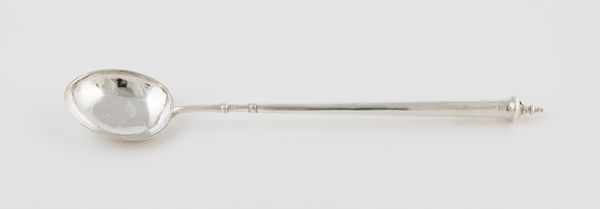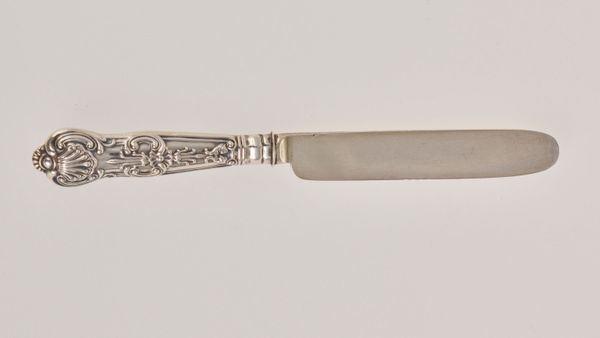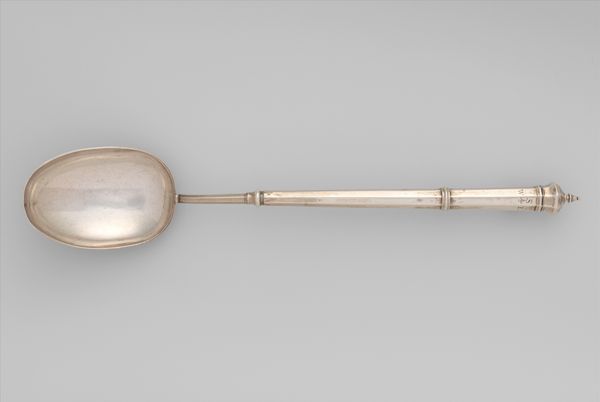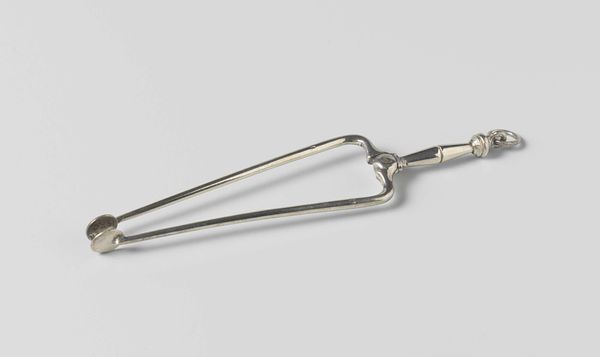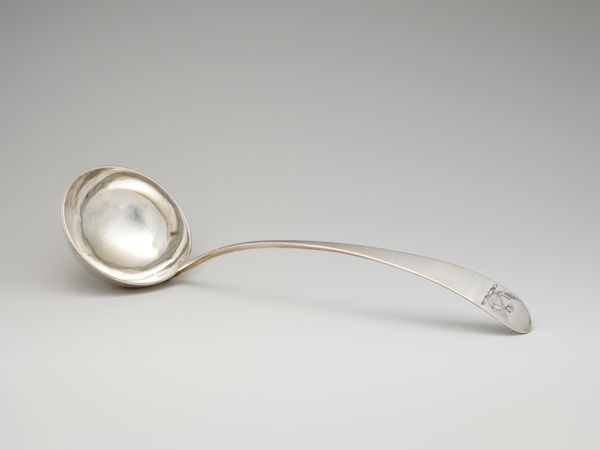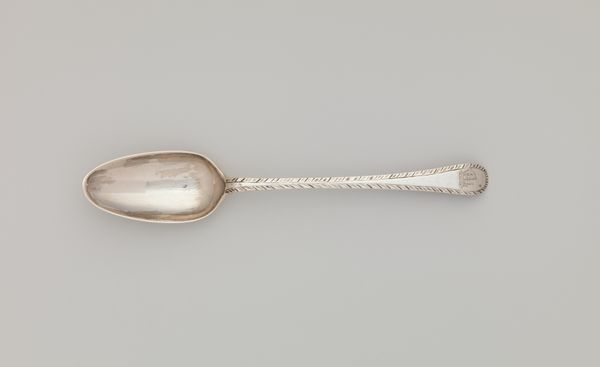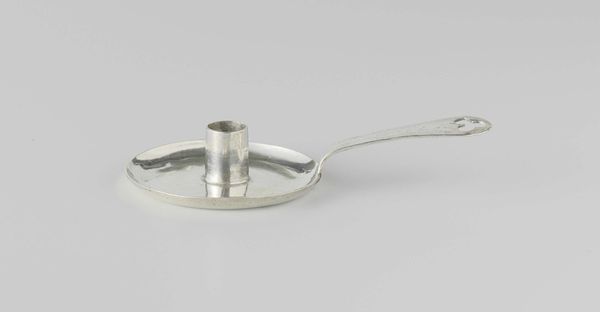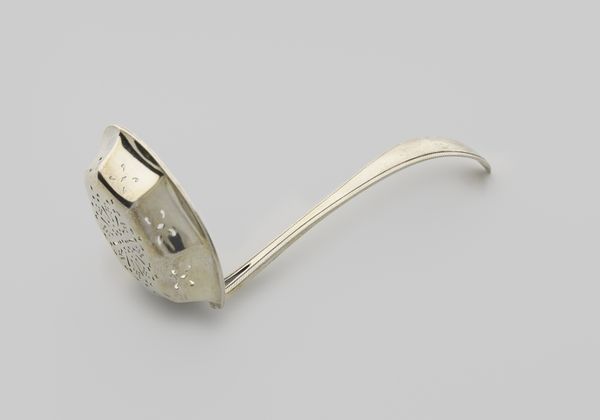
silver, metal, sculpture
#
silver
#
metal
#
sculpture
Dimensions: 26.4 cm (10 3/8 in.)
Copyright: Public Domain
Editor: This is a silver marrow scoop, made by Gale & Willis sometime between 1859 and 1862. It’s such a specific tool! The symmetry is interesting, like an elegant instrument, but I'm struck by how it highlights a very particular aspect of consumption. How do you interpret its historical significance? Curator: This marrow scoop offers a glimpse into Victorian dining practices and social hierarchies. Consider that extracting and consuming marrow was a delicacy enjoyed by the upper classes. Its design also reflects certain gender roles: traditionally, a man's place was at the head of the table where the meat was carved, the placement and handling of such an instrument reinforced their status. Doesn't it make you question what other, less obvious rituals existed? Editor: That's a great point. It seems like this utensil becomes a marker of social status, a tool performing class and gender roles in a very specific way. How do you think this relates to today's discussions about food and social justice? Curator: The act of using a marrow scoop underscores issues surrounding access and privilege, something we still grapple with in our globalized food systems. Thinking about its design, with the long slender handle and bowls on each end, does it prompt any connections to modern discussions around gender fluidity, where the rigid constructs are challenged? Editor: It does. Now I am viewing the symmetrical form as suggestive of the dualities and binaries being dissected and redefined in our current cultural landscape. I appreciate learning more about how everyday objects like this marrow scoop can reflect larger issues. Curator: Indeed! Material culture offers valuable insights into historical norms and persistent social issues. Thinking about the stories objects can tell allows us to challenge inequalities that are embedded in everyday practices, past and present.
Comments
No comments
Be the first to comment and join the conversation on the ultimate creative platform.
